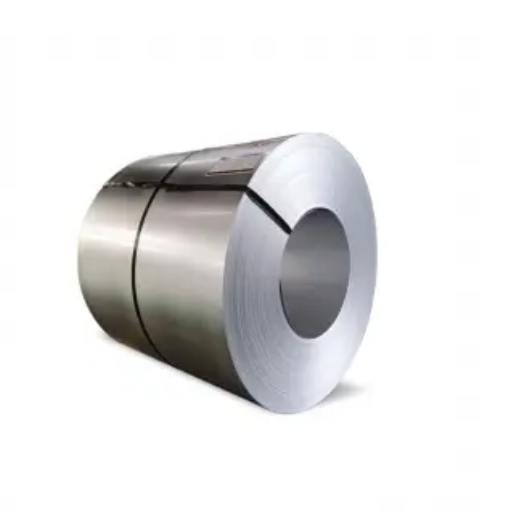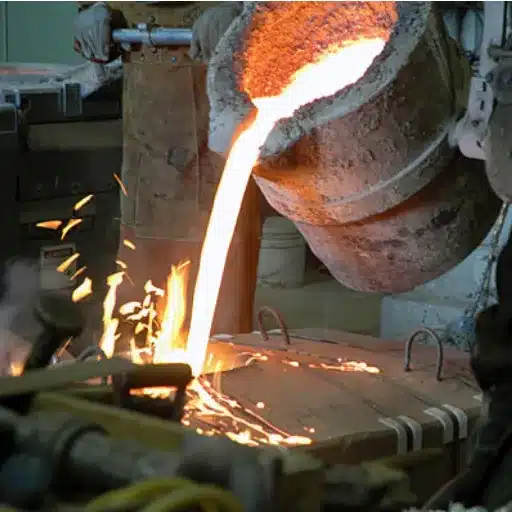Cold-worked stainless steel represents a critical material in modern engineering and manufacturing, prized for its enhanced mechanical properties and superior performance in demanding applications. This process of strengthening stainless steel through plastic deformation not only improves its hardness and tensile strength but also alters its microstructure, granting it unique characteristics that are essential in industries ranging from aerospace to medical devices. However, the complexity of cold work and its impact on material behavior often requires a detailed understanding to optimize its use effectively. This article explores the technical underpinnings of cold-worked stainless steel, shedding light on the science behind the process, its benefits, limitations, and practical applications. Whether you’re a materials engineer, a manufacturer, or simply curious about advanced metallurgical techniques, this guide provides a comprehensive overview designed to inform and engage.
What is Cold Work in Stainless Steel?
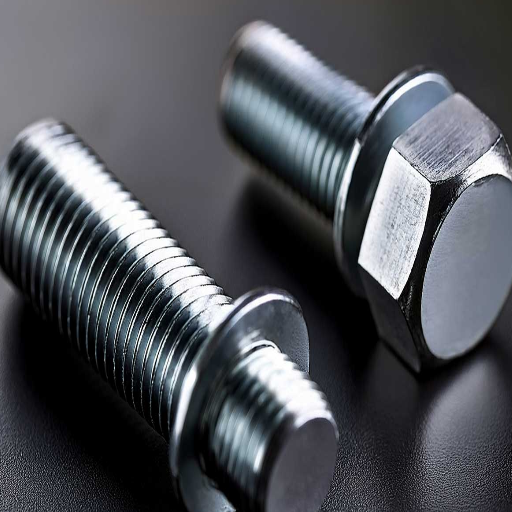
How does the Cold Working Process Affect Stainless Steel?
The cold working process modifies the physical and mechanical properties of stainless steel, primarily due to deformation below the recrystallization temperature. Rolling, drawing, and pressing the steel alters its microstructure, which increases dislocation density. Enhanced strength and hardness from this increased dislocation density due to mechanical manipulation is known as work hardening. Though this increase in strength is beneficial, it reduces ductility, which means the steel becomes more brittle and fractures under stress.
One of the other notable effects of cold working on stainless steel is its effect on corrosion resistance. Some grades, like austenitic stainless steels, change very little in corrosion resistance after being cold worked due to their high chromium content. On the other hand, extreme cold deformation increases residual stresses, which decrease localized corrosion resistance. After cold working, stress-relieving heat treatments like annealing can be used to restore the corrosion resistance while maintaining the mechanical advantages.
Finally, the cold working process affects the magnetism of stainless steel as well. For example, austenitic grades are usually non-magnetic when they are in an annealed state, but the cold working process can induce some degree of phase change from an austenitic structure to a martensitic structure, which contains some magnetism. In general, the effects of cold working are many and complex, which, if not controlled, can affect the performance of stainless steel for particular applications.
What are the Benefits of Cold-Worked Steel?
The cold worked steel improves numerous properties, which significantly improve its mechanical performance and efficiency. One of the marked benefits is the deformation of the steel during the cold working processes increases the strength and hardness tremendously. This is why steel that has been cold worked is utilized for structural parts, fasteners, and tools which need to be highly durable.
Another major advantage of cold working processes is the improvement in surface finish. The material undergoes shaping or extrusion during the cold working process, so the use of heat isn’t required. This results in the refinement of the surface of steel, resulting in smooth and precise finishes. Because of this, there is no need for extensive post-processing treatments which saves time and costs in manufacturing.
Cold-worked steel benefits from increased surface finish, but it also benefits from enhanced surface accuracy. The process provides tighter tolerances to ensure precise and consistent production of uniform parts. This is crucial in aerospace, automotive, and any precision engineering industries. With such characteristics, it is clear why cold-worked steel is highly sought after in industries where reliability, performance, and efficiency are vital.
Are there Any Drawbacks to Cold Working Steel?
Cold working steel has its advantages, but it does come with some complications too. A major concern is the brittling of the material after processing. Cold working involves the deformation of the metal at lower temperatures without a recrystallization phase. This results in reduced ductility and toughness, which may not make the material ideal for impact resistant applications due to an overall reduced ability to endure sudden changes in force.
Prominent in the above scenario is the issue of residual stresses that are introduced during the cold working process. When the material goes through heat or additional processes such as welding, these stresses tend to come out as warping and other forms of distortions. This effect is somewhat frequent and requires an additional measure, such as stress relief annealing for added stability of the steel, which ultimately increases the time and cost.
Energy and equipment expenses also rise significantly with such a procedure, making it far more expensive than hot working. Production and efficiency tend to decline with cold working for large scale and high volume work. Additional funds are needed to control the dimensions and tolerances which restricts the application of certain industries. Cold working may provide benefits in several circumstances, but these factors highlight why such benefits may not be applicable in all scenarios.
How Does Cold Rolling Differ from Other Techniques?
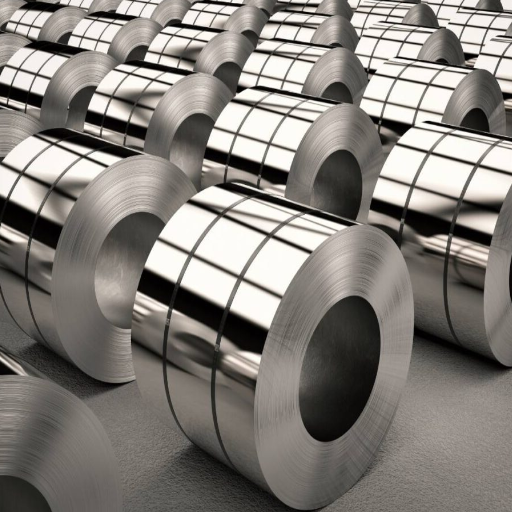
What is the Rolling Process in Cold Rolled Steel?
To improve the quality and refine the dimensions of steel, the surface is shaped and compressed at room temperature during the cold rolling process for steel. Mechanical strength is preserved while attaining a refined finish, and this cold rolling ensures that, unlike in hot rolling done at elevated temperatures, the steel’s strength does not deteriorate. The procedure begins with hot-rolled steel. This has hot rolled steel, which is annealed to soften it first before the rolling process begins, then it is subsequently passed through a sequence of rollers that guarantee smoothness, dimensional accuracy, and precise thickness.
While undergoing cold rolling, strain hardening occurs, which leads to the metal becoming stronger and harder but less ductile. The longer the deformation, the more pronounced the effect; in this case, the reduction of ductility due to plastic deformation while the material is compressed. Moreover, cold rolling provides tighter tolerances, measuring the dimensions as compared to the hot rolling procedure due to a lower likelihood of distortions and warping. The final product of the rolling process obtains a greater texture and appearance, making it desirable for sectors that necessitate high standards of grade.
This method is applied in cases where steel products with high strength, superior surface finish, precise dimensional accuracy, and low cost are required, such as in automotive parts, household appliances, and metal furniture. With the application of cold rolling, manufacturers can achieve a great degree of repetition in production, which results in consistent products while maintaining optimal productivity.
How Does Cold Rolled Steel Compare to Hot Rolling?
Compared with shearing, both cold rolling and hot rolling are processes of metalworking that are vastly different in their processes and methods, uses, and even the results produced. In the case of hot rolling, steel is utilized and processed at temperatures above its recrystallization point, at around 927 degrees Celsius or 1700 Fahrenheit. During these stages, the temperatures get exceedingly high, which makes it quite easy for the metal to be shaped, which is why hot rolling is very useful for the large-scale production of standard steel grades. The processes do come with lower internal stress. The finish on the surface is not smooth and is quite rough, while lesser control is exerted over the cooling due to thermal expansion prior.
As for cold rolled steel, this is done at room temperature or slightly over after the hot rolling process is done. This additional step does fine the steel, which leads to an improved surface finish and better tolerances while also being more accurate dimension-wise. The forces that are applied during cold rolling in a compressive manner aid in better hardness, more tensile strength, and a better microstructure of the steel. This improves the overall quality, but the added precision brings along greater expense factors in the production and processing time than in the case of hot rolling.
The applications of each process vary greatly. As an example, hot-rolled steel is used in the construction of beams and plates where their surfaces do not require fine finishes, and measurements need not be exact. On the other hand, cold-rolled steel is best suited for highly accurate and visually appealing applications, such as within the precision of consumer machinery parts, consumer electronics, and appliance enclosures. Although both methods have their advantages, the balance between hot rolling and cold rolling is determined by the specific required mechanical properties and nominal design values of the final product.
What are the Mechanical Properties of Worked Stainless Steel?
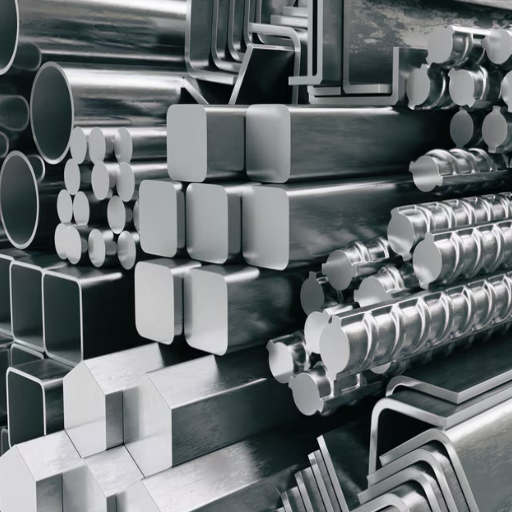
How Does Cold Work Affect Tensile Strength?
The process of cold working boosts the tensile strength of stainless steel due to the addition of strain hardening into its structure. In the cold working process, the material is shaped at room temperature, which is then termed as plastic deformation. This process also increases the dislocation density of the crystal lattice in the material’s structure. An increase in dislocation not only enhances the strength of the material but also decreases its potential to deform.
In this matter, the link connecting cold work and tensile strength can be expressed in different quantitative ways. An example of this would be 304 and 316 grades of austenitic stainless steel , which show a significant increase in tensile strength with further levels of cold work done on it. Further studies have shown that close to 30 percent cold reduction results in an increase of tensile strength of up to 50 to 100 percent, depending on the specific grade and condition of the material.
Furthermore, the strain hardening exponent (n-value) is one of the determinants of the material’s ability to endure greater stress combined with prolonged deformation. It should also be noted that excessive cold working tends to reduce ductility, making it more brittle and prone to fracture under some circumstances. This can, however, be remedied with the application of heat, in the form of annealing, which restores ductility while retaining a degree of strength consolidation from cold work.
What is the Impact on Corrosion Resistance?
The effects of cold working on a material’s corrosion resistance are quite complex because they depend on the type of material, the extent of deformation done to it, and the conditions of the environment that surrounds the material. Furthermore, cold working tends to alter some features in the microstructure, like grain boundaries or the dislocation density, which will eventually affect the material’s vulnerability to corrosion in the long term. Cold working processes also have five impacts in resisting corrosion:
- Increase in Surface Residual Stresses: Cold working also inflicts a remaining tensile stress of some sort to the surface part of the material which can indeed serve as some type of precursors for SCC or stress corrosion cracking, most especially when dealing with a chloride environment. Any such stress will eventually reduce the capacity of the material to meet the corrosive forces over a period.
- Formation of Strain-Induced Micro-cracks: The majority of these processes will end up in some form of stress concentrating and hence undergoing strain hardening leading into formation of superficial micro cracks of some degree. Corrosive substances move into these micro-cracks with greater ease, furthering such localized corrosion processes as pitting or crevice corrosion.
- Modification of Grain Boundary Characteristics: The grain structure of a material, before undergoing cold working is rather coarse and this results in a low boundary area and while this aids in dislocating the grain structure, enhancing the mechanical strength is needed, raising the grain boundary will end up increasing courtesy to the materials composition and withdrawal from the environment.
- Reduction in Passivation Ability: Corrosion resistance of materials like stainless steel greatly benefits from the passive oxide film. Surface cold working superimposed on passive layer formation inhibits the uniform development of passive layers by causing lateral features to disrupt the continuity of the oxide film and the passive oxide film surface.
- Enhanced Susceptibility in Aggressive Environments: Increased susceptibility to corrosion is exacerbated in materials with intensive cold working performed on them, particularly in aggressive environments featuring acidic or high salt concentrations. Heavily worked aluminum alloys, for example, are more prone to accelerated corrosion on account of galvanic reactions due to deformed microstructural regions.
In aerospace, marine, and chemical processing industries, the balance between mechanical performance and corrosion resistance is crucial, making an understanding of these effects essential. Oftentimes, these negative effects can be minimized with proper post-processing treatments such as annealing or surface finishing.
Does Cold Working Affect Hardness?
Indeed, cold working influences the hardness of a material to a great extent, mainly through which is referred to as work hardening or strain hardening. When a metal undergoes plastic deformation at a temperature below the recrystallization point, the dislocations of the crystal structure multiply and interact, which in turn leads to an increase in dislocation density. This increased density of dislocations hampers further movements of dislocations, which in turn increases the yield strength and hardness of the material.
For example, in steel and Aluminum and Copper, hardness may increase significantly after rolling and drawing and pressing. The amount of hardness increase is dependent on the amount of deformation, which means that more deformation will yield higher hardness in general. In more concrete terms, cold-working treatments are known to increase values of hardness considerably in Vickers or Rockwell scales.
Yet, it’s vital to emphasize that ductility is reduced with an increase in brittleness of the material, while strength and hardness become enhanced. In cases where better ductility is necessary for further applications, certain post-process internal stress relieving heat treatment, such as annealing, is routinely utilized in the first place. This balance is of utmost importance in aerospace and automotive manufacturing, where a combination of precise mechanical properties for functionality, while safety is imperative.
Which Cold Working Methods are Used for Stainless Steel?
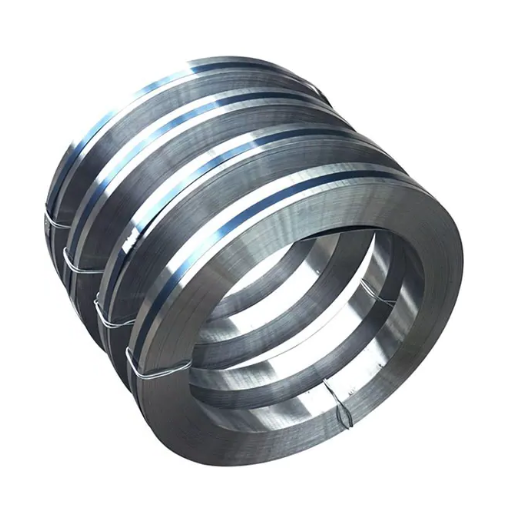
How Does Cold Drawing Work?
Cold drawing is a coldworking process that makes use of a die to thoroughly shape and spatially reduce the area of a given workpiece, to enhance its internal characteristics. As I perceive, the workflow commences from an unlabeled blank, which undergoes treatment by lubrication to facilitate ease of motion within the die. The die, which is fabricated from a fracture-resistant material like carbide or diamond, is machined to specific standards that determine the surfaces and idiosyncrasies of the topmost layer of the material.
For me, one of the main advantages of cold drawing is that a material’s tensile strength and hardness can be enhanced without using heat. This is the outcome of indented plastic deformation at ambient room temperatures, therefore metal becomes more rigid due to strain hardening. To elaborate, with the case of stainless steel, the enhanced mechanical performance and tighter tolerances are immensely pivotal in fields such as the aerospace industry or medical devices. However, the level of ductility is reduced due to the work hardening effect that is observed; thus, intermediary annealing steps must be taken if increased alterable shape at ease is preferred.
In my experience, if the material is properly annealed between passes, cold drawing can be performed multiple times consecutively to achieve incremental reductions in size. This leads to greater flexibility in manufacturing and allows for efficient production of custom profiles and intricate geometries. The efficiency and control of cold drawing make it an essential method in metalworking that requires high levels of precision and reliability.
What is the Process of Cold Forming?
Cold forming or cold working is a type of metal working process that does not require heating. It applies a rigid impact to the metal which permanently reshapes the material. This increases its strength and enhances the surface finish due to strain hardening. It includes rolling, pressing, stamping, drawing, and extrusion. Under cold forming, processes are more accurate as there is no change in temperature, which aids the metal forming in maintaining better dimensional accuracy when compared to hot forming.
First, a blank or workpiece needs to be selected. It is generally made from steel, aluminum, brass or copper as they have good ductility and malleability. Then, this material undergoes high pressure with the help of specialized dies and machines, and morphology is defined. The changes are done in steps and some annealing may be done between steps to avoid work hardening and cracking.
Warming is not needed to carry out the cold forming process, reducing energy consumption while also improving waste emissions. This alone presents the clear advantage of environmental sustainability. Additionally, through better shaping, the repeated dislocation of the material improves the tensile strength and hardness of the material by refining the grain structure. Given the aviation, automobile, and even the electronics industry, where precision and reliability are crucial, this process has broad application due to its high efficiency.
How is Cold Rolled Steel Strip Produced?
As a result of meticulously setting the mechanical processes steps involving hot-rolling, pickling, cold-reduction, and so forth done on steel, one cold-rolled steel-strip is achieved. Firstly, we possess hot-rolled steel which is used as a starting piece and subjecting it to pickling gives us a surficial steel devoid of any contaminants. Ensuing processes oscillate between milling and room temp compression. The cross-section’s dimensionality is achieved when the height is decreased by 50 to 90 percent as per requirements.
To attain the desired elongation and ductility without foretelling a loss of strength in steel, annealing is done. In addition to achieving workability and ductility, this process equally relieves the internal stress resulting from the rolling, as the microstructure of the material is equally altered positively. To achieve the desired uniformity in surface finish together with the intended finesse and height, sometimes entails full passing, while others entail rolling, which is skin-passed.
Contemporary systems of quality control and monitoring check consistency and accuracy during production. The sensors and automated systems measure, in real-time, the essential factors of the part or assembly’s thickness, tensile strength, and surface roughness. These checks ensure that the final product is satisfactory for modern construction, automotive, and appliance manufacturing industries. Significant developments in process technology further specialize the steel strips by advancing their production efficiency, lowering energy and material waste.
What Role Does the Rolling Mill Play in Cold Working?

What are the Surface Finish Options Available?
Available surface finishes for cold worked stainless steel consists of No. 1, No. 2D, No. 2B, Bright Annealed (BA), No. 3, No. 4, No. 6, No. 7, No. 8, TR (Temper Rolled), and special order or custom finishes.
| Finish | Process | Appearance | Key Use | Reflectivity |
|---|---|---|---|---|
|
No. 1 |
Hot rolled |
Dull |
High-temp parts |
Low |
|
No. 2D |
Cold rolled |
Smooth, dull |
Deep drawing |
Low |
|
No. 2B |
Cold rolled |
Bright, smooth |
General-purpose |
Moderate |
|
BA |
Bright anneal |
Reflective |
Appliances |
High |
|
No. 3 |
Polished |
Coarse texture |
Food equipment |
Low |
|
No. 4 |
Polished |
Fine texture |
Decorative panels |
Moderate |
|
No. 6 |
Brushed |
Satin |
Architectural |
Low |
|
No. 7 |
Buffed |
High luster |
Trim, ornaments |
High |
|
No. 8 |
Polished |
Mirror finish |
Signs, mirrors |
Very High |
|
TR |
Cold worked |
Varies |
Strength-focused |
Varies |
|
Custom |
Varies |
Tailored |
Specialized uses |
Varies |
How is a Rolling Mill Used in Cold Rolled Steel Production?
A rolling mill is a crucial process assist tool within the cold rolled steel production process that further reduces the thickness of steel strips using precise pressure application. It starts by taking steel sheets or slabs and rolling them multiple times in a set of rollers to obtain the desired gauge with the required surface finish (often at room temperature). In comparison to hot rolling, which utilizes high temperature, cold rolling relies on mechanically applied force to further improve the material’s geometric precision and refine its grain structure, resulting in increased strength and hardness.
Modern rolling mills have been improved with new technologies like control systems that allow real time changes to be made to roll force, tension, and speed. These developments increased product quality by reducing deviation of set tolerances, which is critical to the automotive, construction, and electronics industries. The use of automation technology and sensors also allows more precise control over the roughness and flatness of surfaces, resulting in better finishing and consistency compared to classical approaches.
The most notable aspects of cold rolling are the rolling speed, reduction ratio, and the deformation temperature, all of which are important for the resulting steel. Therefore, the rolling mill serves the dual purpose of both a material transforming tool and a controller to maintain strict compliance to mechnical standards.
References
- The work hardening effect and the residual stresses from the forming process on the strength of lipped channel sections of stainless steel – Work on the structure of stainless steel and examine its strength.
- Stress corrosion cracking of cold-worked austenitic stainless steels in PWR environments – Study on the amalgamation of stress corrosion and cold-worked austenitic stainless steels.
- Environmental issues regarding the starting point of stress–corrosion cracking of cold-worked 304 stainless steel – A dissertation on the subject of stress-corrosion cracking in 304 stainless steel.
Frequently Asked Questions (FAQ)
Q: What is cold-worked stainless steel?
A: Cold worked stainless steel refers to steel material that has been shaped and strengthened at room temperature without the use of heat treat processes. This technique enhances the strength and hardness of the steel while maintaining its original crystalline structure.
Q: How does cold working differ from hot working in steel alloys?
A: Cold working involves shaping metal at room temperature, while hot working involves processing at elevated temperatures. Cold working typically results in higher strength and a finer cross-section profile compared to hot working, which makes the metal more pliable.
Q: What are the advantages of cold working stainless steel?
A: Cold working can significantly increase the strength and hardness of steel, allowing it to withstand higher tensile forces. It also improves the surface finish and dimensional accuracy of the steel material.
Q: Can cold-worked stainless steel be used in consumer goods?
A: Yes, cold-worked stainless steel is commonly used in consumer goods due to its strength, durability, and aesthetic appeal. Its excellent corrosion resistance also makes it ideal for a variety of applications.
Q: What is the role of a master coil in the cold working process?
A: A master coil is a large rolled coil of steel from which smaller coils are slit or cut. These smaller coils are then cold-formed or extruded into the desired shape or specification for further use in manufacturing processes.
Q: How does the annealed condition affect the properties of stainless steel?
A: The annealed condition refers to the heat treatment process where steel is heated and then cooled slowly to relieve internal stresses. This process results in a softer and more ductile material, making it easier to work with during subsequent forming techniques.
Q: What are some common forming techniques used in cold working stainless steel?
A: Common forming techniques include drawing, bending, rolling, and extrusion. These methods allow the steel to be shaped plastically into the desired shape without the application of heat.
Q: How does cold working affect the microstructure of stainless steel?
A: Cold working alters the microstructure of stainless steel by increasing dislocation density, which enhances the material’s strength and hardness. However, it may reduce ductility and requires careful control to maintain the desired properties.
Q: What is the significance of quenching in the processing of steel alloys?
A: Quenching is a process of rapidly cooling hot steel, usually after heat treatment, to lock in a crystalline structure that provides higher strength and hardness. It is not typically associated with cold working, but it can be used to achieve specific material specifications in various steel alloys.
Q: Why might duplex stainless steels be chosen over other types for certain applications?
A: Duplex stainless steels offer a combination of austenite and ferritic stainless steels, providing higher strength and excellent corrosion resistance. This makes them ideal for demanding environments where both mechanical properties and durability are critical.

